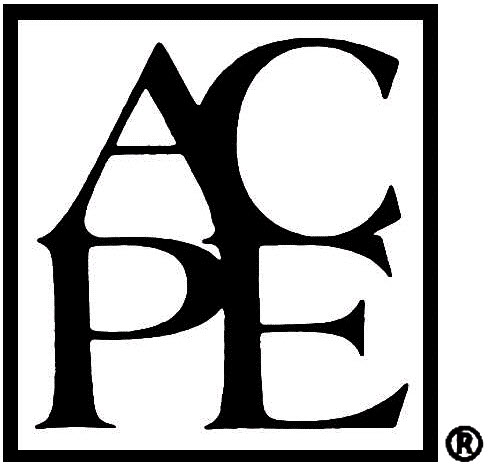Human Trafficking
Additional Topic Areas CE for Pharmacists
Are you a Pharmacy Tech? Check out the Pharmacy Tech version of this course.
Course Summary
Human trafficking is considered a form of modern slavery, and it is global in its reach and impact. Trafficking in persons affects all genders, ages, and ethnicities. Human trafficking is not found only within illegal businesses. Human trafficking can be found in a wide variety of otherwise legal businesses, industries, and services, including many economic sectors in the United States. They include agriculture, food service, sales, domestic services, construction and landscaping, commercial sex, and marriage. Human trafficking adversely affects a victim’s mental and physical stability, security, and well-being. It adversely affects entire communities, commerce, countries, and geographical regions. This means that health care professionals, including pharmacy staff, are uniquely situated to identify and assist trafficked individuals and to report trafficking to the proper authorities. Health care professionals need to know when and how to report human trafficking and the resources that are available to support victims who have been trafficked.
Define human trafficking, its types, and locations
Discuss strategies for identifying human trafficking in health care settings
Risk factors or warning signs of human trafficking for adults and minors
Describe how to report suspected cases of human trafficking
Discuss resources for victims of human trafficking
Course Syllabus
I. Introduction
II. Prevalence of Human Trafficking
III. Defining the Scope of Human Trafficking
IV. Human Trafficking in the U.S.
V. Risk Factors for Sex/Labor Trafficking in the U.S.
VI. Consequences of Human Trafficking
A. Physical Consequences
B. Psychological Consequences
C. Human Trafficking and Trauma Bonding
VII. Identifying the Victims of Human Trafficking
A. Screening Tools for Victims of Human Trafficking
B. Factors Suggesting Human Trafficking
VIII. Interviewing a Suspected Human Trafficking Victim
IX. Reporting Human Trafficking
X. Interdisciplinary Health Team Role in Reporting and Referral
XI. Resources for Victims of Human Trafficking
XII. Summary
- Read the course objectives and faculty planner disclosure
- Read the course material
- Complete the post-test with a minimum score of 70% and complete the course evaluation form.
- Results are automatically submitted to CPE Monitor
Faculty Planner Disclosure
The following individuals were involved in developing this activity: Pamela Sardo, PharmD, BS. Pamela Sardo has no conflicts of interest or financial relationships regarding the subject matter. There are no financial relationships or commercial or financial support relevant to this activity to report or disclose by RxCe.com or any of the individuals involved in the development of this activity.
Unlabeled Use Disclosures
The information provided in this course is general in nature and it is solely designed to provide participants with continuing education credit(s). This course and materials are not meant to substitute for the independent, professional judgment of any participant regarding that participant’s professional practice, including but not limited to patient assessment, diagnosis, treatment and/or health management. Medical and pharmacy practices, rules, and laws vary from state to state, and this course does not cover the laws of each state; therefore, participants must consult the laws of their state as they relate to their professional practice. Healthcare professionals, including pharmacists and pharmacy technicians, must consult with their employer, healthcare facility, hospital, or other organization, for guidelines, protocols, and procedures they are to follow. The information provided in this course does not replace those guidelines, protocols, and procedures but is for academic purposes only, and this course’s limited purpose is for the completion of continuing education credits. Participants are advised and acknowledge that information related to medications, their administration, dosing, contraindications, adverse reactions, interactions, warnings, precautions, or accepted uses are constantly changing, and any person taking this course understands that such person must make an independent review of medication information prior to any patient assessment, diagnosis, treatment and/or health management. Any discussion of off-label use of any medication, device, or procedure is informational only and such uses are not endorsed hereby. Nothing contained in this course represents the opinions, views, judgments, or conclusions of RxCe.com LLC. RxCe.com LLC is not liable or responsible to any person for any inaccuracy, error, or omission with respect to this course, or course material.
Computer Hardware/Software Requirements
Please ensure the device you plan to use meets these requirements and specifications:
- Operating System: Windows 7,8,10, or 11 /Mac OS X 10.9 or later/iOS/Android
- Supported Browsers: Microsoft Edge, Firefox, Google Chrome, Safari, Opera
- A connection to the internet
- For Live Webinars or Conferences: GoToWebinar application for iOS, Android, Mac, or PC. You cannot 'call into' a live conference.
Rating: 3.67/5
Based on the ratings of 142 customers
- Target Audience: Pharmacist
- Secondary Audiences: This educational activity is also for other healthcare professionals, such as nurses, physicians, or others who may be part of a healthcare team and may be interested in this educational topic. A healthcare team approach to patient care may be discussed in this activity, as applicable. No state board or professional organization has evaluated this activity to determine whether it meets the continuing education requirements of nurses, physicians, or other professions not listed under the “Target Audience” described above. Always verify with individual employers or supervisors whether they will accept this educational activity upon completion.
- Contact Hours: 1.0 (0.1 CEUs)
- Activity Release Date: 9/9/2025}
- Activity Expiration Date: 9/9/2028}
- Activity Type: Knowledge
- UAN: 0669-0000-25-110-H99-P
- Topic: Additional Topic Areas
- CeBroker Number: 20-1327690
Faculty:
Preview the Materials:

RxCe.com, LLC is accredited by the Accreditation Council for Pharmacy Education as a provider of continuing pharmacy education.